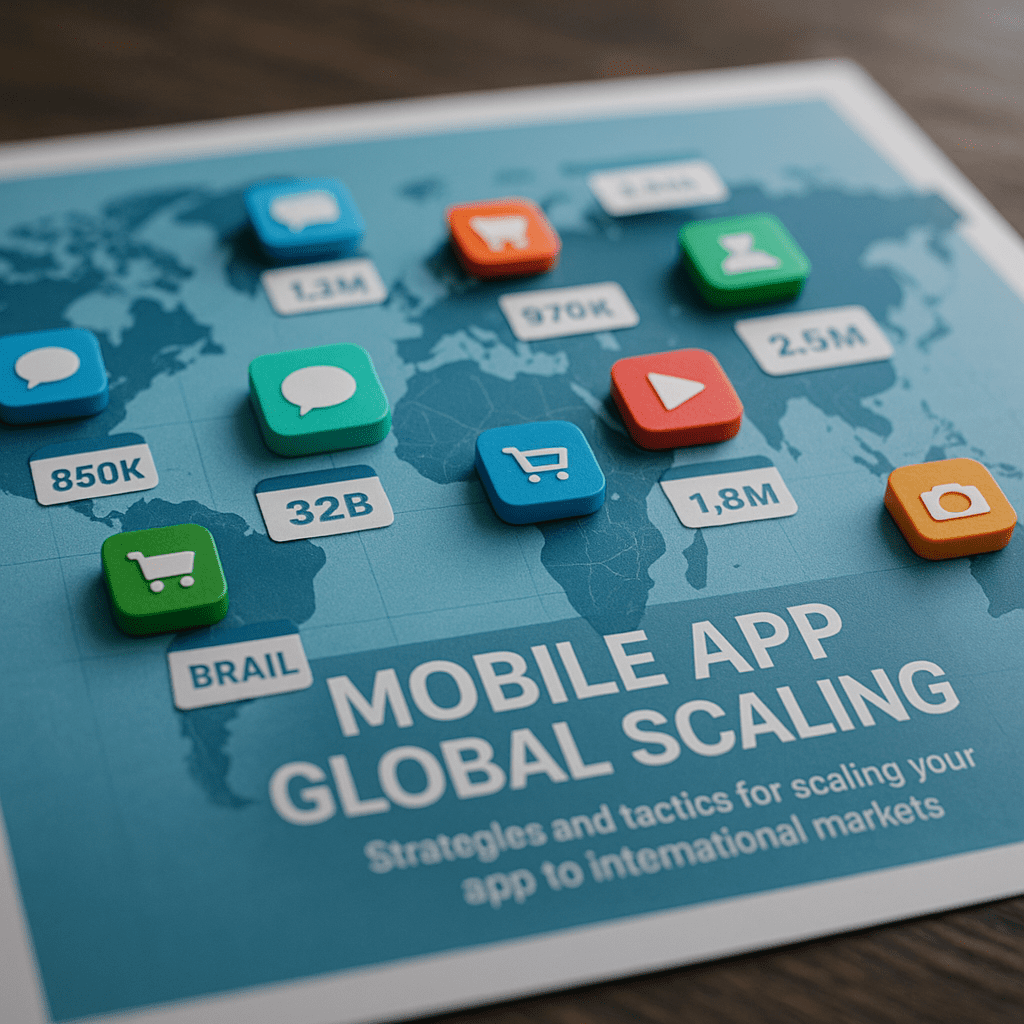
Mobile App Global Scaling: Strategies and Tactics for International Success
In an era where 6.8 billion people carry a smartphone in their pocket and global in-app spending surpassed $270 billion in 2024, expanding your mobile app beyond domestic borders is imperative. Competition is fierce, user expectations are unforgiving, and the reward for getting it right is a significant share of tomorrow’s trillion-dollar app economy. This guide distills proven, data-backed methods that growth teams and performance managers can deploy today to build technical foundations, craft culturally resonant experiences, and drive sustainable user acquisition worldwide.
The Imperative for Global Expansion
Market Opportunity
Emerging markets in Southeast Asia, Latin America and Africa represent some of the fastest growth in smartphone adoption. According to Data.ai, time spent in apps averages 4.6 hours per day, with users engaging 30 apps monthly. While North America and Western Europe remain high-value markets, secondary markets often deliver lower acquisition costs and rapid scale when approached strategically.
User Expectations and Revenue Potential
Today’s global users expect instant loading, zero downtime and native-grade experiences—regardless of geography. In 2024, app store revenues climbed 16 percent year-over-year. Brands that deliver localized, high-performance experiences capture higher retention, deeper engagement and up to 25 percent more in average revenue per user (ARPU).
Foundational Strategies for International Growth
1. Data-Driven Market Selection
Rather than a scattershot approach, prioritize markets using a weighted scorecard: smartphone penetration, average revenue per user, payment infrastructure maturity and competitive density. Leverage publicly available data (GSMA, Data.ai, World Bank) and your own analytics to identify three to five primary expansion targets. Pilot lightweight campaigns or soft launches to gauge organic traction before committing significant budget.
2. Cloud Infrastructure & Microservices
Scalable, regional cloud deployments (AWS, Google Cloud, Azure) are critical to maintaining consistent performance under unpredictable traffic spikes. Adopt a microservices architecture so individual features (authentication, media processing, payments) can be scaled, deployed and monitored independently. This reduces risk, shortens release cycles and eases capacity planning in each region.
3. Deep Localization & Cultural Adaptation
Localization goes beyond translation. It encompasses visuals, tone of voice, UX patterns and monetization models. Offer local currencies and payment methods (e-wallets, carrier billing) to remove friction. Tailor iconography, color palettes and conversion funnels to cultural norms. Apps that invest in deep localization report up to 30 percent higher install-to-active-user conversion rates.
4. International App Store Optimization (ASO)
Optimize title, description and keyword sets per storefront—Google Play, Apple App Store and regional alternatives (e.g., Huawei AppGallery). Localize creative assets: screenshots and video teasers should reflect local language, device frames and culturally relevant scenarios. Proactively monitor and respond to user reviews in native languages to build trust and improve your store ranking.
5. Responsive & Inclusive Design
Ensure pixel-perfect layouts across screen sizes, OS versions and device capabilities. Test on region-specific hardware—entry-level to flagship devices—to catch performance issues before launch. Support accessibility features (larger text, screen readers) and handle right-to-left languages. An inclusive design approach broadens your addressable audience and strengthens brand reputation.
6. Automated, AI-Driven Marketing
Use machine-learning engines to optimize creative rotation, audience segmentation and bidding strategies in real time. Integrate predictive churn models to trigger tailored re-engagement campaigns via push, in-app messages and email. Combine paid user acquisition with organic channels—local social platforms, content partnerships and Admiral Media influencer programs—for a balanced, cost-efficient funnel.
7. Security, Privacy & Compliance
Global markets enforce a patchwork of data regulations (GDPR, CCPA, PDPA, LGPD). Implement user consent flows, data encryption at rest and in transit, and rigorous access controls. Regularly audit third-party SDKs and payment gateways. Certification frameworks (ISO 27001, SOC 2) demonstrate your commitment to data security and build partner confidence.
Tactical Playbook for Cross-Border App Growth
- Localized Onboarding Flows: A/B test welcome screens and permission dialogs by region to maximize opt-in rates.
- Geo-Targeted Offers: Present time-limited discounts or trial periods aligned with local holidays and purchasing cycles.
- Regional Content Hubs: Surface culturally relevant content—news, promotions, user-generated feeds—to boost engagement.
- Influencer Amplification: Partner with micro-influencers in each market for authentic referrals and community building.
- Dynamic Pricing Models: Offer subscription tiers or in-app purchase bundles tailored to local spending power.
- Cross-Promotion Networks: Collaborate with non-competing apps in the same market to swap placements at scale.
- Performance Analysis Cadence: Establish weekly KPI reviews (retention, LTV, CAC) per region and adjust tactics based on real-time insights.
Overcoming Common Scaling Challenges
Ecosystem Fragmentation
Beyond Google Play and Apple App Store, some markets favor regional alternatives. Map distribution channels early and allocate QA cycles for each. Automate build pipelines to publish updates simultaneously across stores.
Cultural Misalignment
Generic translations erode trust. Engage local copywriters and UX researchers. Run focus groups or remote usability studies to validate assumptions before launch.
Architectural Bottlenecks
Monolithic backends can choke under sudden demand. Adopt container orchestration (Kubernetes, ECS) and API gateways to scale discrete modules. Integrate synthetic monitoring to detect latency regressions.
Measurement & Attribution Across Borders
Privacy changes (IDFA deprecation, Android Advertising ID) complicate user-level attribution. Implement aggregated measurement solutions and statistical modeling to estimate campaign ROI. Centralize dashboards for unified visibility by region.
Conclusion
Scaling a mobile app internationally in 2025 demands a holistic approach: rigorous market selection, rock-solid cloud architecture, culturally authentic experiences, and data-driven marketing. By building these capabilities—and partnering with specialists like Admiral Media—growth teams can unlock new user bases, optimize spend efficiency and secure long-term revenue streams in every corner of the globe.
